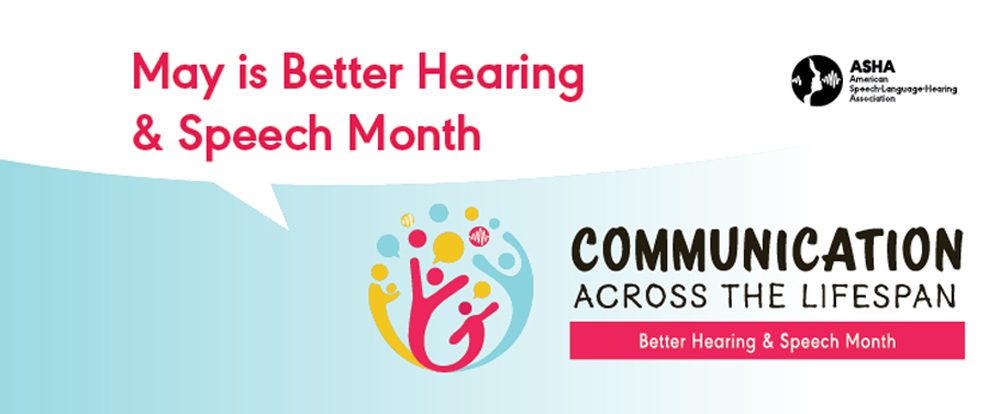During the final week of Better Hearing & Speech Month, we wrap up the topic of “Communication Across the Lifespan” by looking at hearing issues in adults. Hearing loss is often thought of as a natural effect of old age and, as such, is typically left untreated. In fact, only 14% of adults with hearing loss who could benefit from amplification seek a hearing aid. However, identifying hearing loss early can be crucial: Hearing loss may be linked to other serious issues such as dementia, diabetes, falls, social isolation, and depression.
Equally important to hearing loss treatment is hearing loss prevention. The hearing-related dangers of heavy machinery, firearms, and fireworks at a close distance are well known. However, routine activities such as going to concerts or nightclubs or even attending a music-based fitness class can carry dangerous noise levels. The American Speech-Language-Hearing Association recommends that if you must raise your voice to be heard, can’t hear or understand a person 3 feet away from you, or experience tinnitus (a ringing in your ears) hours or days after the event, then the noise level may be too high. Over-the-counter earplugs are a widely available solution, but some individuals may benefit from having earplugs custom made and fit by an audiologist.
The articles highlighted below from the American Journal of Audiology and Perspectivesfocus on hearing loss treatment and prevention. Additional resources, including a self-evaluation for hearing screening, are available through ASHA’s Hearing and Balance page or the BHSM homepage.
- A Preliminary Study of a Spanish Graphic Novella Targeting Hearing Loss Prevention. Researchers developed and tested a graphic novella that attempted to spread knowledge about noise-induced hearing loss in a group of Spanish-speaking agricultural workers.
- Incorporating Informational Counseling in Treatment for Individuals With Hearing Loss and Their Families. Authors offer a framework and content to consider when providing informational counseling to patients and their families in all stages of life. (Note: This article is available only to affiliates of ASHA’s Special Interest Groups and/or to Perspectives subscribers but has been made available to all readers until June 10, 2019.)
- A Smartphone National Hearing Test: Performance and Characteristics of Users. Looking at the global implications of hearing loss, researchers studied both the uptake and the results of a hearing test disseminated via a smartphone application.
- A Primer on Dementia and Hearing Loss. Due to the links between dementia and hearing loss, the author explores the role of audiologists in dementia treatment. (Note: This article is available only to affiliates of ASHA’s Special Interest Groups and/or to Perspectives subscribers but has been made available to all readers until June 10, 2019.)
- The Effects of Service-Delivery Model and Purchase Price on Hearing-Aid Outcomes in Older Adults: A Randomized Double-Blind Placebo-Controlled Clinical Trial. In this open access article, the authors studied traditional, over-the-counter, and placebo hearing aids in adults aged 55–79.
We hope that these articles have provided a helpful context and springboard for discussion during Better Hearing & Speech Month! Although BHSM is only 1 month per year, you can advocate for the professions of audiology and speech-language pathology year-round by citing and sharing (on social media) articles from the ASHA Journals and resources from ASHA’s Information for the Public page.









